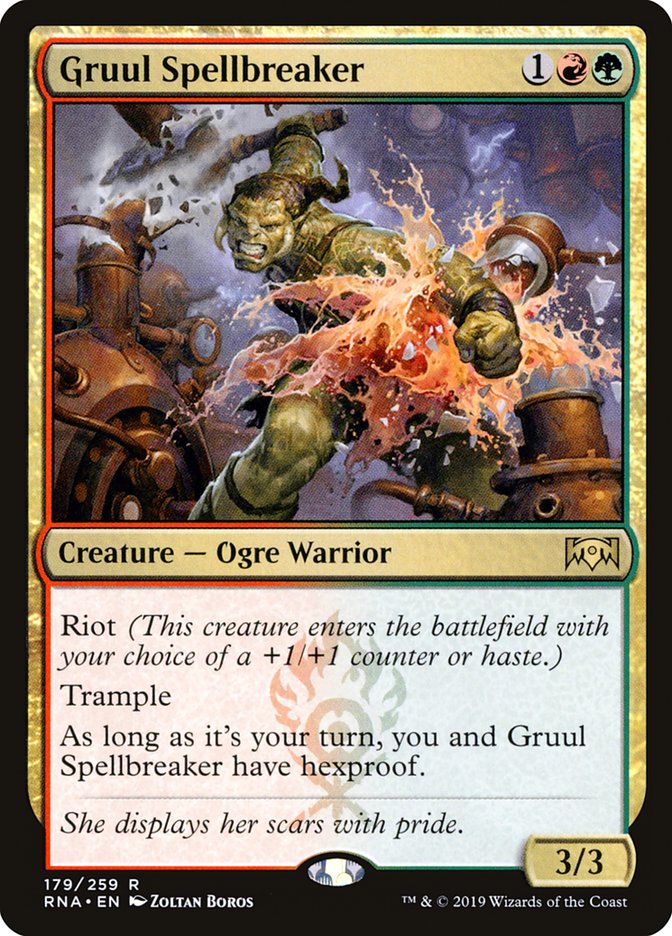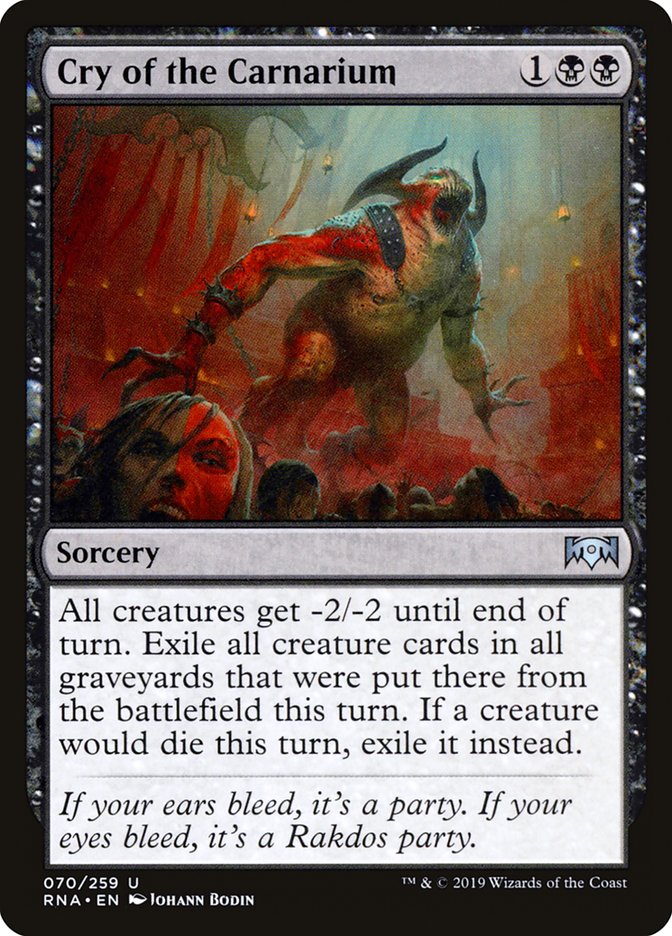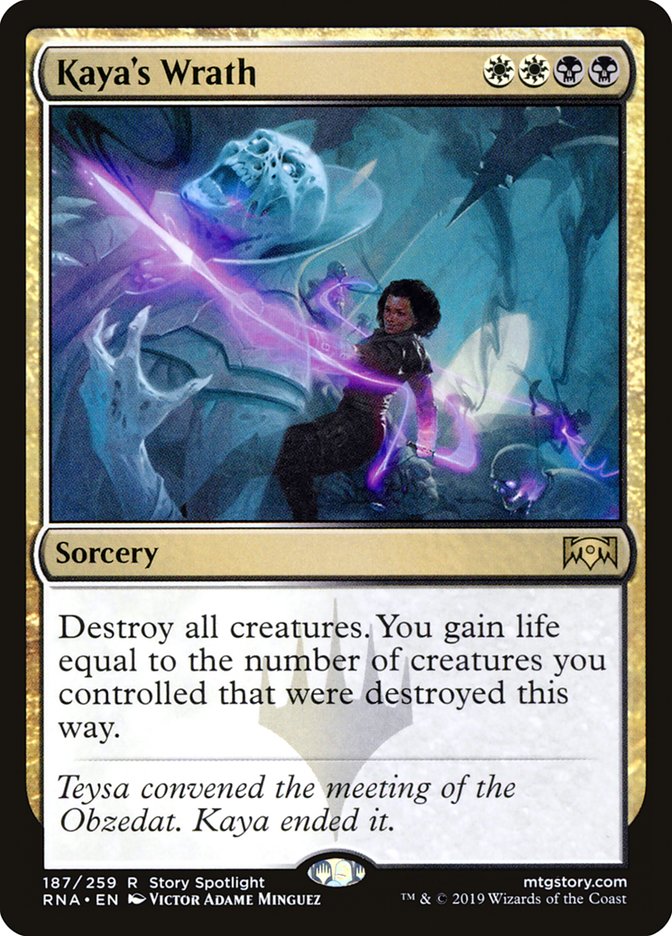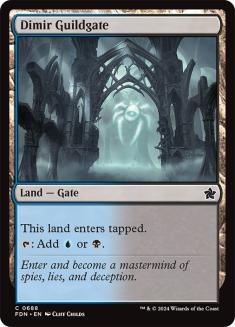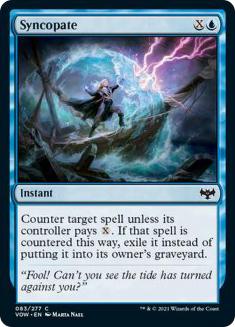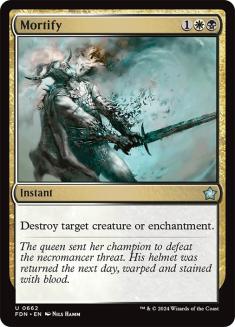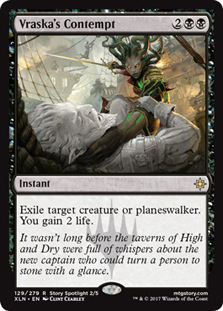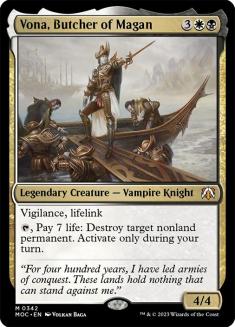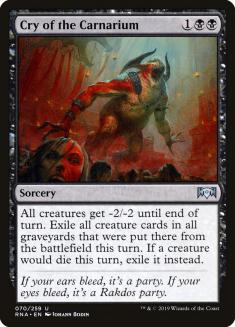It has been quite a while since the Esper Professor has hit you with the Standard technology. With a laser focus on Modern, I haven’t had the opportunity to delve into my favorite format since Mythic Championship Cleveland. I should continue to test Modern with the next Mythic Championship being the same format, but I can’t take another day of Izzet Phoenix grinding at this point in my life. I’m still bustling with excitement from making Top 8 at Grand Prix Tampa and my confidence in piloting Izzet Phoenix is at max capacity. I don’t know if I’m locked in on it for London, but I do know I need some Standard R&R.
Creatures (7)
Lands (26)
Spells (27)
- 1 Negate
- 2 Vraska's Contempt
- 2 Search for Azcanta
- 4 Cast Down
- 4 Thought Erasure
- 4 Sinister Sabotage
- 1 Assassin's Trophy
- 4 Chemister's Insight
- 2 Ritual of Soot
- 3 Wilderness Reclamation
Sideboard

I wrote an article a little ways back on Sultai Control and how I crafted it to take on the Mythic Championship metagame in Cleveland. This deck treated me well before I went on a Standard hiatus and not much has changed since then. The top decks in the metagame are about the same, with a few new aggressive elements that I have feared would rear their ugly head one day.
Creatures (24)
- 4 Rekindling Phoenix
- 3 Dire Fleet Daredevil
- 4 Goblin Chainwhirler
- 2 Kraul Harpooner
- 4 Gruul Spellbreaker
- 3 Skarrgan Hellkite
- 4 Growth-Chamber Guardian
Planeswalkers (2)
Lands (24)
Spells (10)

Gruul Aggro is a petrifying deck for Sultai Control, producing very large creatures in the early turns and having a few giant threats in the mid-game. This is a challenging scenario for most control decks, but especially ones that don’t have a powerful battlefield sweeper to reset the aggro clock. Sultai Control has gotten by with Ritual of Soot but it’s no guarantee that it will be useful later in the game. In contrast, Kaya’s Wrath is strong at each of those points, making it the color combination I’m more interested in following at this point.
There are other challenging issues that Gruul Aggro presents for the control caucus. Rekindling Phoenix, Gruul Spellbreaker, Dire Fleet Daredevil, and Growth-Chamber Guardian have control hate peppered through their card text.
When Gruul Spellbreaker was released, the alarm sounded loudly here at Control HQ. Haste, hexproof, low-cost, and a high-power creature that makes you act on your own turn are a lot of qualities I do not find appealing in a spell. Unfortunately for us, many other players enjoy this type of thing, so we must adapt accordingly.
Gruul Aggro has been fringe and isolated on Magic Arena for quite some time, until recently. The list above is the list that Teresa Pho piloted to an SCG Tour Top 8 in Cincinnati, while Daekyeung Bae conquered Grand Prix Kyoto with it on the same weekend. There have been small successes before last weekend, but this is a loud and clear message that Gruul Aggro is to be respected.
I was able to modify Sultai Control to have an edge on Gruul Aggro, but it ended up weakening the deck against much of the field. Sultai Control was already iffy in the control mirror, lacking the requisite Teferi, Hero of Dominaria, and these changes only exacerbated that weakness. I figured with a nickname like the Esper Professor, a lifetime commitment to the best Shard in the game, and customized license plates that read “Esper,” I should get back to my roots.
Planeswalkers (5)
Lands (26)
Spells (29)
- 4 Absorb
- 3 Mortify
- 2 Negate
- 2 Vraska's Contempt
- 2 Search for Azcanta
- 3 Cast Down
- 4 Thought Erasure
- 4 Chemister's Insight
- 2 Cry of the Carnarium
- 3 Kaya's Wrath
Sideboard

I have worked with my buddy/teammate Edgar on Esper Control in the past, but this incarnation of the deck was all him. Since Esper Control is one of the best decks in the format, most of these lists will look very similar moving forward. This is due to the non-negotiables that must be included in the deck, leaving very few flex slots to mull over. Let’s break down the strengths, weaknesses, and suggested changes of this build in a metagame that will continue to get more aggressive with the recent successes of Mono-Red Aggro, Gruul Aggro, and Azorius Aggro.
Strengths
In my most recent deck tech with Brian David-Marshall, he mentioned that his favorite moments are when I eat crow for misjudgments of cards that are widely accepted by the community. This has occurred most famously with Preordain and is about to happen again here with Chemister’s Insight.
It took my quite sometime to come around to the pricy draw-two because of my love for Read the Bones from the Standard of old. Notion Rain is the current Standard-legal version and I had great success with it in control variants over the last two Standard formats. With aggro being pushed down the power level rankings, I continued to fall in love with Notion Rain and happily took two damage without a care in the world.
Not only is that unacceptable in today’s Standard, but it turns out Chemister’s Insight was pretty good the whole time. It’s still frail in comparison to Glimmer of Genius, but that isn’t a solid argument when one is legal to use and one is not. I have seen some Esper Control players incorrectly use less than four Chemister’s Insight in their deck. Card draw is a vital component of a good control deck. This option allows you to play polarized cards that are absolute bombs against some decks but duds against others.
Two Cry of the Carnarium and three Kaya’s Wrath are optimally spot on. The five battlefield sweeper count against Azorius Aggro is the perfect number, giving you a high likelihood of having one available before it’s too late. Azorius Aggro and Mono-Red Aggro can have starts that obliterate you if you do not have one of these two spells handy, making it vital to have the appropriate amount in your maindeck.
Cry of the Carnarium is one of those cards that can knock out an aggro deck immediately, yet rots in your hand when facing down decks without small creatures. This increases the value of Chemister’s Insight, giving you the option to ditch spells that are applicable answers to what you’re facing. Kaya’s Wrath is much more versatile, making it the primary battlefield sweeper at three copies. Against Gruul Aggro, Kaya’s Wrath is a must-have in conjunction with cheap spot removal, as well as removal that exiles. The reason all three types of answers are required is a testament to the diverse threat package that Gruul Aggro possesses. Early on they attack you one at a time, but there are many games you will lose to the battlefield getting out of control.
The sideboard is nearly perfect with Hostage Taker being the powerful new norm in Esper Control. This technology came from the last Mythic Championship and I am thankful for it. I have always been a strong advocate of a creature-based sideboard in control, taking advantage of our opponent’s desire to take out much of their removal after Game 1.
This practice has been around since I started playing the game and I don’t see that changing. Even when our opponents know we are bringing in some creatures, they can’t afford to leave in an abundance of removal spells. They must make room for their sideboard, as well as defeat our main strategy that is spell-based.
The rest of the sideboard is packed with options that I already use in my version, increasing my confidence moving forward. With the strong maindeck and sideboard, only a few changes are necessary to answer the rising aggro tide that is upon us.
Weaknesses and Changes
There are just a few issues with Edgar’s take on Esper Control. The one Island in the maindeck must go and get replaced by Dimir Guildgate. As my Esper Control lists became public during preview season, I had the one Island in my deck for a good month into the format. This was pointed out by Gerry Thompson in one of his early articles as an issue for a deck that hoped to cast Kaya’s Wrath on time.
My defense then, like what Edgar’s is now, was how rarely that situation would come up. It would have to be an Island as my only option to play and a lethal battlefield presence that made Kaya’s Wrath my only out. This was rare then, but more common now. Standard now has enough decks that make a Turn 4 battlefield sweeper mandatory for the control enthusiast, so swap that Island with a Dimir Guildgate. It may leave a sour taste in your mouth to incorporate a land that enters the battlefield tapped, but just remember that those types of lands were the norm in older Standard formats.
Out:
In:
I have always supported two Negate in the maindeck of control, but that era may have come to an end. Typically for Esper Control, the noncreature spells are the most threatening, but not as much anymore. I still think one Negate must remain to give the fifth hard counterspell against control and midrange foes, but the second copy should move to a Syncopate for versatility. Syncopate has lost some favor recently but is still a powerful answer that hits all threats starting on Turn 2.
Out:
In:
The last weakness of the maindeck is only having two copies of Vraska’s Contempt. With the rise of Rekindling Phoenix and the existence of Arclight Phoenix, playing a third Vraska’s Contempt is mandatory. It isn’t a clean removal spell due to its four-cost competition with Chemister’s Insight and Kaya’s Wrath; however, it is a necessary evil. When threats are reoccurring against Esper Control, the game can easily get out of hand.
There are combinations of cards that can be used to answer a Rekindling Phoenix when a Vraska’s Contempt is unavailable, but that is a tall order against a deck with some powerful threats. Against Izzet Phoenix, Arclight Phoenix can tax all your generic removal until your gas tank is on empty. Izzet Phoenix is an easy matchup, in part due to Esper Control’s access to exile technology. In this situation, it’s an easy removal spell swap. Mortify is great, but the utility of Vraska’s Contempt gives it the three-of designation.
Out:
In:
The sideboard has only two small changes that we need to make moving forward. Vona, Butcher of Magan is bad in application and I excitingly gave it a few testing sessions to be sure. I have had this card in my control decks periodically for quite some time, and it never does what I need it to do. It has the appeal to be an agent of change in midrange matchups, dodging a lot of their removal.
Since the entire world knows control players are now aboard the creature train Game 2, they are likely to make our five-mana investment bite the dust. This stings a lot less with Thief of Sanity, due to the cost differential. Hostage Taker follows a similar advantage to Thief of Sanity, with the added bonus of Control Magic attached to one of your opponent’s creatures. The upside for Vona simply isn’t there and it doesn’t have the beef that Lyra Dawnbringer brings to the table, making it worse in matchups that call for lifelink assistance.
Removing Vona allows for us to add that second Negate that we were forced to cut from the maindeck. It’s important that we have three powerful answers to spell threats from the mirror, Temur Reclamation, and any other deck that attacks you without creatures. With three Negate, four Absorb, four Thought Erasure, and three Duress, I found myself having one card too many to bring in against those matchups. Triple Duress is where the flaw lay, compelling me to drop it down to two for optimization. I did just that and have been very happy with the result. There needs to be a third Cry of the Carnarium in the sideboard to stifle an aggro player’s dream of defeating you, giving me the perfect Esper Control 75.
Out:
In:
With only a few days left to go to get to Mythic on Magic Arena, it’s time to get back to playing Esper Control. And this is the build I recommend you play – Esper Professor approved.


